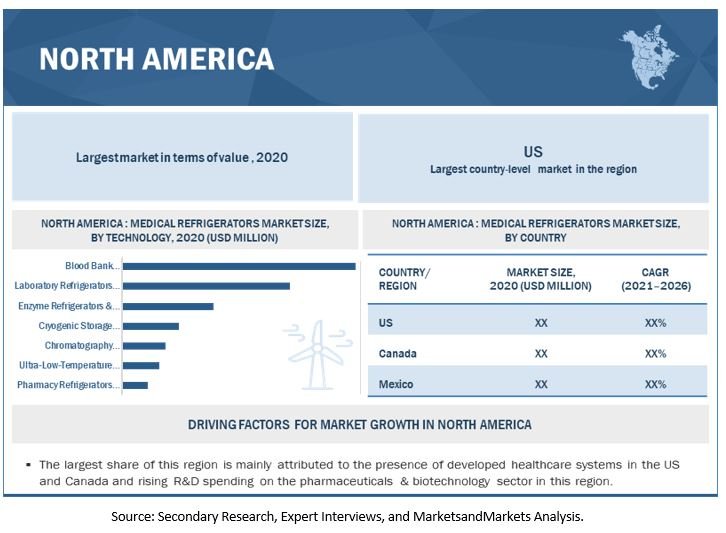COVID-19 Impact on the global medical refrigerators market
The pandemic is estimated to have an impact on various factors of the value chain of the medical refrigerators market, which is expected to reflect during the forecast period, especially in the year 2020. The impact of COVID-19 is as follows:
The pandemic has led to a significant increase in the demand for medical refrigerators. Most hospitals/healthcare facilities are currently trying to expand patient monitoring to home care settings or other temporary setups to provide optimal care.
COVID-19 has led to a significant surge in demand for medical equipment such as medical refrigerators, both in the hospital and home care settings. Manufacturers are increasingly focusing on expanding their portfolios to meet the increasing need for these devices. During the first quarter of 2020, the market witnessed an increase in demand for medical refrigerators in response to COVID-19. However, the demand and adoption of medical refrigerators have been constant throughout the year, and the trend has continued well in the first half of 2021.
Medical Refrigerators Market Dynamics
Driver: Increasing demand for blood storage centers and blood banks
The rising number of surgeries, coupled with the increasing prevalence of disorders including anemia and cancer, is resulting in an increase in blood transfusion procedures. It is critical to maintain optimal temperature and hygiene during the storage and transportation of blood as well as blood components. The American National Red Cross estimates that nearly 16 million blood components are transfused each year in the US. With the increase in the demand for blood transfusions, there is an unmet need for blood storage centers and blood banks, which, in turn, is driving the growth of the medical refrigerators and freezers market.
Opportunity: Increasing research & development investments in medical science by government organizations
According to the American Association for the Advancement of Science (AAAS), US investment in medical and health research and development (R&D) increased by 6.4% from 2017 to 2018; it reached USD 194.2 billion in 2018. The Australian government’s National Health and Medical Research Council (NHMRC) has a yearly budget of USD 900 million for medical research. The increase in focus towards providing better medical services to people across the globe has resulted in developed economies, health organizations, and philanthropists investing heavily in R&D activities, providing various opportunities in the market.
Challenge: High cost of equipment
Medical refrigerators are designed to store biomedical samples at low temperatures and are used in hospitals, blood banks, research institutes, and by the biological pharmaceutical industry. The cost of medical refrigerators is very high. In addition, medical experts and physicians are required to operate these freezers. Both these factors make refrigerators & freezers expensive equipment. Therefore, the consumption of such refrigerators among pharmacies, clinics, and small hospitals is almost negligible.
By product type, ultra-low-temperature freezers segment is expected to grow at a faster rate during 2021-2026, by volume
Ultra-low-temperature freezers segment is expected to grow at a faster rate during the forecast period. Ultra-low temperature freezers are used for long-term storage in laboratories, universities, hospitals, or scientific research facilities. Advancements in drug discovery and development and increasing genomics research activities are expected to be the major drivers for the ultra-low temperature freezers market.
By end use, blood banks segment is expected to grow at a faster rate during 2021-2026, by volume
The blood banks segment is expected to grow at a faster rate during the forecast period. Blood banks is a place where blood or blood plasma is collected, stored, and processed for storage under refrigeration for future use in blood transfusion procedures. Increased demand for safe blood due to high prevalence of blood transfusion cases is driving the demand.
By region, Middle East & Africa is expected to grow at a faster rate during 2021-2026, by volume
Middle East & Africa is expected to grow at a faster rate during the forecast period. The Middle East & Africa represents a relatively smaller market for medical refrigerators as compared to other geographic regions. However, due to expectations of significant growth in the pharmaceutical market in the region, the overall outlook is promising. Factors, such as the increasing aging population, growing awareness of healthcare, increasing prevalence of chronic diseases, and increase in discretionary incomes have increased the demand for healthcare services in this region.

